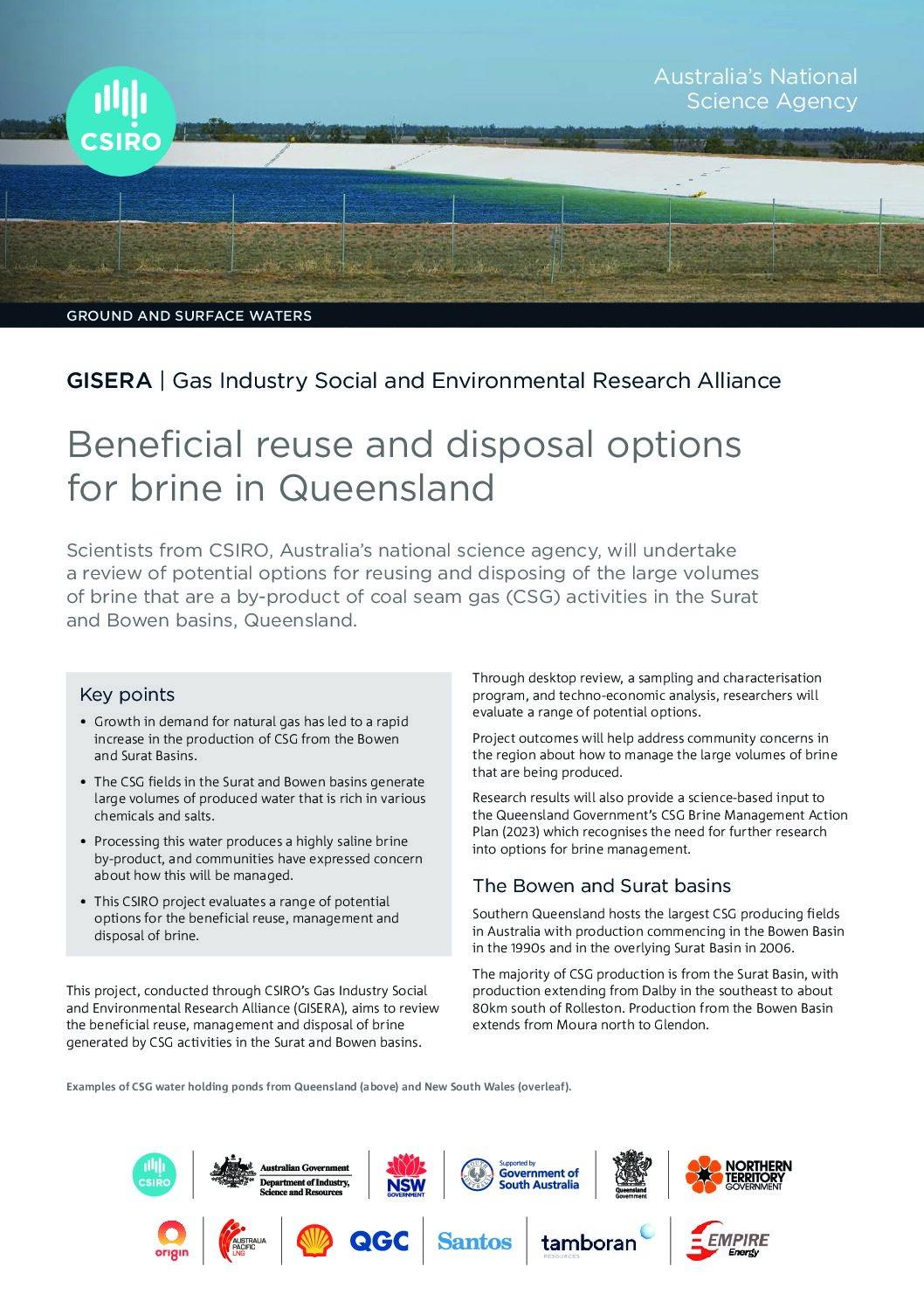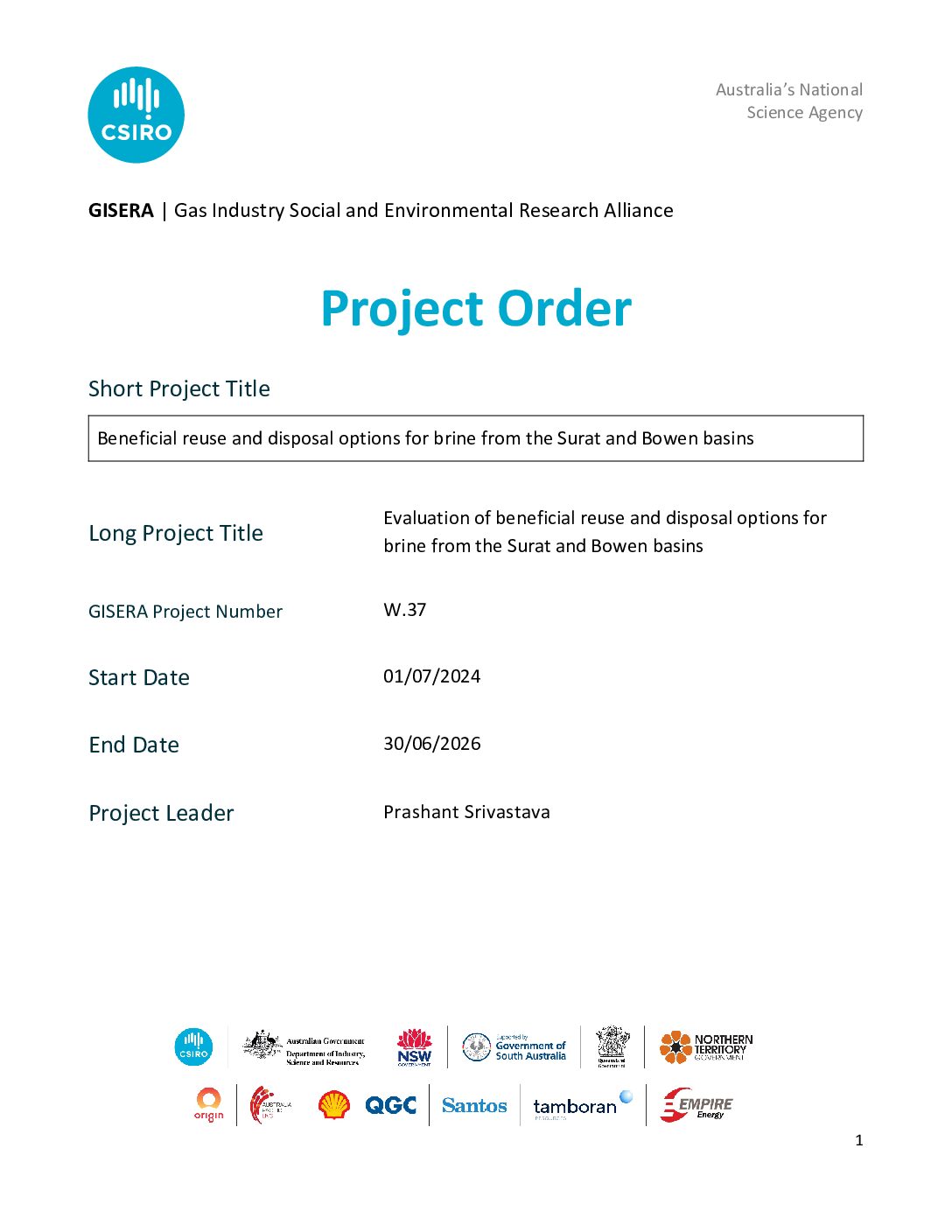Beneficial reuse and disposal options for brine in Queensland
The CSG fields in the Surat and Bowen basins in Queensland generate large volumes of produced water rich in various chemicals and salts. The predominant management option for this produced water is treatment through the reverse osmosis (RO) process that produces treated water for beneficial reuse along with a highly saline brine by-product.
The brine is considered a waste product with no current beneficial reuse identified. Over the life of CSG activities in Queensland, the total volume of brine produced is expected to contain approximately five million tonnes of solid salt.
Local communities have concerns about these large volumes of brine and how they will be managed. To address these concerns, the potential options for the beneficial reuse, disposal and management of brine need to be evaluated appropriately and presented to stakeholders.
In this project, CSIRO scientists will collate existing data and information on produced water and brine generated due to CSG activities in the Surat and Bowen basins, and conduct sampling and characterisation of brine from both basins.
Using this data, scientists will review existing and emerging technologies and solutions for beneficial reuse, disposal and management options for brine from the Surat and Bowen basins, and analyse technical and economic implications for the options identified.

Water produced from coal seams is stored in holding ponds (example above) before being treated. The treatment process produces treated water which can be used for beneficial purposes as well as brine, a waste product. Options for managing brine are the focus of this CSIRO research project.



